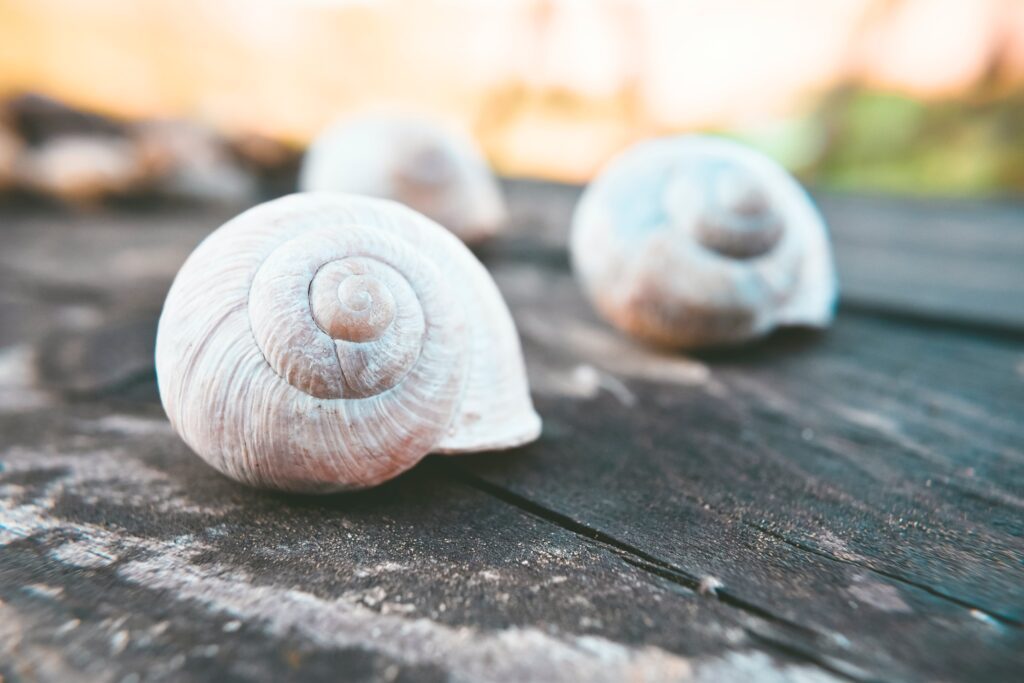Introduction
The Diversity of Marine Mollusks
Beneath the waves of our planet’s oceans lies a hidden world of incredible diversity and adaptability. Marine mollusks, a vast and varied group of creatures, are a testament to the wonders of ocean life. From the graceful snails that glide along coral reefs to the elusive octopuses lurking in deep trenches, marine mollusks come in a dazzling array of shapes, sizes, and lifestyles. In this blog post, we will delve into the fascinating realm of marine mollusks, exploring their classifications, unique adaptations, and ecological roles. These extraordinary creatures are more than just shells; they are vital components of marine ecosystems and are deserving of our admiration and protection. So, join us on this underwater journey as we uncover the secrets of the ocean’s molluskan inhabitants.
Classification of Marine Mollusks
Classification of Marine Mollusks
Marine mollusks are a diverse and fascinating group of creatures belonging to the phylum Mollusca. This phylum is one of the largest in the animal kingdom, with over 100,000 known species. Mollusks are known for their incredible adaptability and can be found in a wide range of marine environments, from the deepest ocean trenches to shallow coastal waters. The major classes within the phylum Mollusca are Gastropoda, Bivalvia, and Cephalopoda, each with distinct characteristics that set them apart.
Gastropoda
Gastropoda is the largest and most diverse class within the Mollusca phylum, comprising over 60,000 species. The most iconic members of this class are the snails, which can be found in both freshwater and marine environments. Gastropods are characterized by their coiled shells, which can vary in shape and size. They are typically equipped with a radula, a unique feeding organ, and a foot used for locomotion. Some gastropods are herbivores, while others are carnivorous, and they play vital roles in marine ecosystems by helping control algae populations.
Bivalvia
Bivalvia, commonly known as bivalves, are a class of mollusks with two hinged shells. This class includes clams, oysters, mussels, and scallops. Bivalves are filter feeders, using their gills to extract plankton and detritus from the water. They lack a radula and are characterized by their simple, symmetrical body plan. Bivalves are known for their economic and ecological importance, as they serve as a food source for humans and play a crucial role in maintaining water quality by filtering impurities from the water.
Cephalopoda
Cephalopoda is a class of mollusks that includes some of the most intelligent and visually striking marine creatures, such as squids, octopuses, and cuttlefish. Unlike other mollusks, cephalopods lack an external shell, and their bodies are more streamlined for swimming. They have well-developed eyes, complex nervous systems, and remarkable problem-solving abilities. Cephalopods are carnivorous and are known for their predatory behavior, using their tentacles and beaks to capture and consume prey. They are also capable of rapid color and texture changes, which they use for communication and camouflage.
Adaptations and Lifestyles
Adaptations and Lifestyles of Marine Mollusks
Mollusks, a highly diverse phylum of marine creatures, have evolved an array of remarkable adaptations that enable them to thrive in various marine environments. These adaptations are essential for their survival and have led to a wide range of lifestyles, from sedentary filter feeders to active predators. Let’s explore the fascinating world of mollusk adaptations and lifestyles.
Adaptations for Survival
- Shell Variations: Mollusks exhibit a broad range of shell structures, from coiled shells in gastropods to hinged shells in bivalves. These shells serve as protective armor, providing defense against predators and environmental challenges.
- Radula: Many mollusks, especially gastropods, possess a radula—a specialized feeding organ equipped with tiny teeth. The radula allows them to scrape algae, detritus, or prey from surfaces, adapting to different food sources.
- Cephalopod Intelligence: Cephalopods, such as octopuses and squids, have exceptionally developed nervous systems and highly evolved brains. This intelligence aids them in complex problem-solving and prey capture, demonstrating the adaptability of mollusks in the realm of cognition.
Diverse Lifestyles
- Sedentary Filter Feeders: Bivalves, like clams and mussels, are examples of sedentary mollusks. They anchor themselves to the substrate and use their gills to filter plankton and organic particles from the water. Their lifestyle is all about efficient filter-feeding in one location.
- Grazing Herbivores: Gastropods, such as marine snails, are often herbivorous grazers. Their adaptation lies in their radula, which they use to scrape algae and other plant material from rocks and substrates. Some species have even developed chemical defenses against predators.
- Predators of the Deep: Cephalopods are the kings of predation. Octopuses, with their keen eyesight, employ stealth and camouflage to ambush prey. Squids use jet propulsion and powerful tentacles to capture fish and other mollusks, while cuttlefish are known for their lightning-fast strikes.
Unique Behaviors and Survival Strategies
- Camouflage: Cuttlefish and octopuses are masters of disguise. They can change the color, texture, and pattern of their skin in milliseconds, adapting to their surroundings and avoiding predators or sneakily approaching prey.
- Ink Defense: Cephalopods use ink sacs to release a cloud of ink when threatened, confusing and distracting predators. This allows them to make a quick escape or hide while the predator is disoriented.
- Burrowing: Some mollusks, like razor clams, are expert burrowers. They use a muscular foot to dig into the substrate rapidly, making it challenging for predators to capture them.

Ecological Importance
Ecological Importance of Marine Mollusks
Marine mollusks play crucial ecological roles within their ecosystems, impacting various aspects of marine life, from nutrient cycling to shaping the dynamics of marine food webs. Understanding the significance of these creatures is essential for appreciating their place in the complex web of marine life.
Nutrient Cycling and Biodeposition
One of the vital ecological services provided by marine mollusks is their role in nutrient cycling. Filter-feeding bivalves, like clams and mussels, are known for their ability to extract phytoplankton and organic particles from the water. In doing so, they help control phytoplankton populations and improve water clarity. Furthermore, as they ingest organic matter, mollusks assimilate nutrients and excrete waste in the form of biodeposits. These biodeposits are rich in essential nutrients and organic matter, contributing to the cycling of nutrients in the ecosystem. They serve as a valuable source of nutrients for other organisms, enhancing the overall productivity of the marine environment.
Marine Food Webs and Trophic Relationships
Mollusks are integral components of marine food webs, occupying various trophic levels. Herbivorous gastropods graze on algae and seagrasses, while bivalves are filter feeders consuming phytoplankton. These mollusks, in turn, serve as a food source for a wide range of predators, including fish, birds, and crustaceans. Cephalopods, with their predatory lifestyle, play a critical role in controlling populations of smaller marine organisms, balancing the ecosystem.
Interactions and Competition
Mollusks also engage in complex interactions with other species. For example, some hermit crabs use empty gastropod shells as protective homes, highlighting the interdependence between mollusks and crustaceans. Competition for resources and living space is common among mollusks, which can lead to the establishment of intricate ecological niches in marine communities.
Bioturbation and Habitat Modification
The burrowing activities of certain mollusks, such as razor clams and shipworms, have significant effects on sediment composition and water flow. They create burrows and tunnels in the substrate, promoting oxygen penetration and influencing the distribution of other species in the sediment. This bioturbation can also play a role in stabilizing coastal ecosystems by reducing erosion and enhancing sediment deposition.
Notable Examples
Notable Examples of Marine Mollusk Species
Within the diverse world of marine mollusks, there are several remarkable and iconic species that have captured the imagination of scientists and nature enthusiasts alike. Let’s delve into the fascinating world of some of these creatures, including the giant Pacific octopus and the cone snail.
Giant Pacific Octopus (Enteroctopus dofleini)
- Impressive Size: The giant Pacific octopus is, as its name suggests, the largest octopus species and one of the largest known mollusks. Specimens have been recorded with arms spanning up to 30 feet, and they can weigh as much as 50 kilograms.
- Exceptional Intelligence: These octopuses are celebrated for their remarkable problem-solving abilities and high intelligence. They are known to exhibit complex behaviors, such as opening jars, unscrewing lids, and escaping from enclosures, making them some of the most intelligent invertebrates in the world.
- Masters of Camouflage: Giant Pacific octopuses are expert camouflagers, capable of changing their skin color and texture to match their surroundings. This skill helps them hide from predators and ambush prey effectively.
- Solitary Lifestyle: These octopuses are solitary creatures, typically found in shallow coastal waters along the Pacific Ocean. They are voracious predators, preying on various marine animals, including crabs, clams, and fish.
Cone Snail (Conus spp.)
- Venomous Predators: Cone snails are a group of predatory marine snails known for their striking and colorful shells. They are equipped with a specialized radula that injects venom into their prey, primarily fish and other mollusks.
- Deadly Toxins: The venom of some cone snail species is potent and can be lethal to humans. However, it has also drawn scientific interest due to its potential for medicinal applications, particularly in the development of painkillers.
- Harpoon-Like Radula: Cone snails have a harpoon-like radula that extends from their proboscis to capture prey. Some species have evolved to have a long, extendable proboscis, allowing them to reach hidden or buried prey.
- Marine Biochemical Diversity: These snails are renowned for their remarkable biochemical diversity, with various species producing distinct venoms that are highly specialized for specific prey. This diversity is an excellent example of coevolution in the marine world.
These two iconic marine mollusk species, the giant Pacific octopus and the cone snail, demonstrate the incredible diversity and adaptability of mollusks. Their unique characteristics and behaviors have sparked interest in both the scientific community and among those who appreciate the wonders of the ocean. While the octopus showcases high intelligence and remarkable camouflaging abilities, the cone snail demonstrates the power of adaptation in the form of venomous predation and the potential for groundbreaking scientific discoveries.
VIDEO CREDITS: Next Generation Scie
FAQs
Q. Do all marine mollusks have shells?
A. No, not all marine mollusks have shells. Some, like octopuses and squids, are entirely soft-bodied.
Q. Are all marine mollusks edible?
A. While many marine mollusks are consumed as seafood, not all are edible, and some can be toxic if not prepared properly.
Q. Can marine mollusks move?
A. Yes, marine mollusks exhibit various modes of locomotion, including crawling, burrowing, and swimming.
Q. Are marine mollusks found in freshwater environments?
A. No, marine mollusks are exclusively found in saltwater environments, such as oceans and seas.
Q. How do marine mollusks defend themselves?
A. Marine mollusks employ a range of defense mechanisms, including camouflage, toxins, and protective shells.
Q. Are any marine mollusk species endangered?
A. Yes, several marine mollusk species are endangered due to factors like overharvesting, habitat destruction, and pollution.
Conclusion
In the depths of the ocean, marine mollusks quietly go about their lives, shaping the intricate tapestry of marine ecosystems. From the smallest snails to the largest squids, these creatures showcase nature’s boundless creativity and adaptability. Their remarkable diversity is a testament to the marvels of evolution and the delicate balance that sustains life beneath the waves.
As we conclude our exploration of the diversity of marine mollusks, it’s crucial to remember that these creatures face numerous challenges, from habitat destruction to overfishing. Their survival is intertwined with the health of our oceans, which in turn affects the well-being of our planet. By understanding and appreciating the rich world of marine mollusks, we can take steps to ensure their conservation and the preservation of our oceans’ biodiversity. Let’s celebrate the extraordinary world of marine mollusks and work together to protect and sustain it for future generations.
UP NEXT



